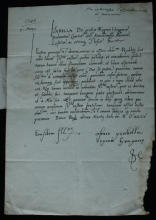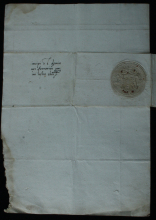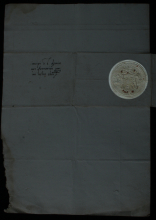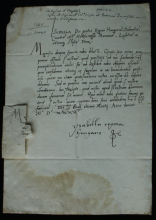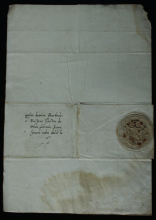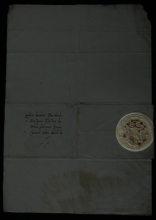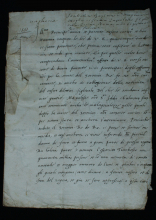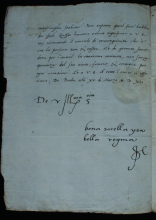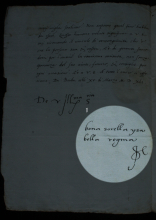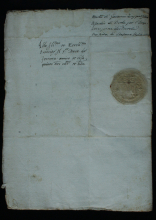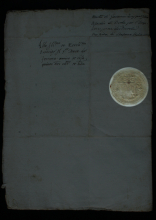A letter from Queen Isabella to Bartholomeo Prospero, the secretary of the Duke of Ferrara, thanking the queen for the services offered by the secretary and informing him that he had no task but to recommend her in memory of the duke.
On the back there is the queen's privy seal:
There’s a quartered shield in the middle of the seal, the first field of which is also quartered: 1. a. Coat of arms of Szapolyai (wolf) b. Hungary (trimount, patriarchal cross) c. Hungary (fielad barry of eight) d. Szapolya family (unicorn) 2. Poland (crowned eagle) 3. Milan (man-eating snake, in Italian heraldry: biscione) 4. Dalmatia (three crowned leopard’s heads)
Inscription of the seal: ISABELLA REGIS POL(ONIAE) NATA D(EI) G(RATIA) REGINA HUNGAR(IAE) DAL(MATIAE) CRO(ATIAE) SLA(VONIAE) ETC.
Interpretation of the seal: In the first quarter of the coat of arms we can see the elements of the coat of arms of the Szapolyai family (wolf, unicorn) and the elements of the Hungarian small coat of arms (barry field, trimount, patriarchal cross). Its second field is the Polish coat of arms, because, as the inscription of the seal shows, Isabella was the daughter of the King of Poland. In the third field, the biscione was originally the coat of arms of the Visconti family, thus it also became the coat of arms of Milan ruled by the Sforza family. As Isabella was the daughter of Bona Sforza, this symbolizes the mother’s part. The fourth field shows the coat of arms of Dalmatia, whose name follows Hungary in the inscription of the seal. It is interesting that the inscription contains Slavonia, although this title was not included in the titles of medieval Hungarian rulers, but it was included among the titles of Ferdinand I the first time, and thus, of course, included by John I, and consequently appeared in the titles of Isabella as well.
The original record held by: State Archives of Modena
Reference code: Archivio di Stato di Modena, Archivio Segreto Estense, Cancelleria, Carteggi con principi esteri, busta 1623/2, fascicolo 4, 31 marzo 1540
Date of creation: Buda, 31 March 1540

